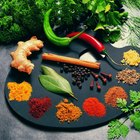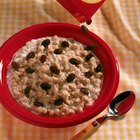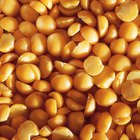HandmadePictures/iStock/GettyImages
Plan Meals Ahead on a Potassium-Restricted Diet
Potassium is present in a wide variety of foods, including fruits, vegetables, milk, grains and meat, so may be wondering what's left to eat if your doctor placed you on a low-potassium diet. While you may need to limit potassium from your diet, it's an essential nutrient, and you need to eat some to keep your heart, muscles and nerves working properly. Have few meal ideas ready to help you get started with your new diet plan.
Low-Potassium Diet Basics
As a nutrient found in foods from almost every food group, the best way to limit potassium from your meals is to include lower potassium choices. Fruits and vegetables are where you need to be the most cautious, because they generally contain the highest amount of potassium. Low-potassium fruits and vegetables include blueberries, cherries, peaches, pears, pineapple, watermelon, carrots, cauliflower, corn, cucumbers, peas and green beans. Dairy products, such as milk and yogurt, are also high-potassium foods, and since there's no low-potassium alternative, keep your serving size small – no more than 1 cup a day. Whole grains such as whole-wheat bread are also high in potassium, so you're better off with refined grains such as white bread. Meat, poultry and seafood contain potassium, but in fairly low amounts; the same with oils and sugar, so you don't need to be as restrictive with these foods.
Breakfast Meal Ideas
Breakfast is an easy meal to keep low in potassium. Eggs and toast, pancakes with syrup, french toast and farina are all naturally low-potassium options. If you need breakfast on-the-go, pop a couple of slices of bread in the toaster, and top with butter and jelly or hard-cooked eggs with a fresh pear. Cereal with milk or a smoothie made with 1/2 cup of yogurt and low-potassium fruits such as blueberries and pineapple with ice also work for a low-potassium breakfast meal.
Lunch Meal Ideas
Sandwiches, such as tuna or turkey, made with white bread make a perfectly good and simple low-potassium lunch. For crunch and nutrition, add carrot sticks and sliced cucumbers with ranch dressing for dipping. If you prefer a hot lunch, make a low-potassium lo mein by sauteing garlic, ginger, broccoli, cauliflower and water chestnuts with cooked spaghetti noodles and cooked chopped chicken breast.
Dinner Meal Ideas
For dinner, fire up the grill for steak, and serve it with grilled asparagus and onions. Baked salmon with rice and green beans also makes a healthy low-potassium dinner. Modify some of your favorite recipes to make them lower in potassium. For example, make a pot of chili, but omit the beans and replace the tomatoes with chopped celery, green peppers and onions. Add a little beef or chicken broth for liquid.
Related Articles

Diet Menu to Lower Potassium

Salt-Free Diet Menus

Foods to Avoid to Prevent Gout
Low-Protein Breakfast Menu

High Fiber & Protein Diet Menus

Low Sodium Foods That Taste Good

How to Make Quaker Oatmeal

A List of Foods That Contain Choline

How to Make Scrambled Egg With Spinach

Nutrition Information on Blueberries

Menu for a Calorie-Restricted Diet

Healthy Unprocessed Lunch Choices

List of Gout Diet Foods
The Best Companion Foods for Vitamin & ...
Selenium For Children

Nutritional Facts of Fava Beans

Which Is Healthier, Lima Beans or ...

Flat Belly Diet & Coffee

A Daily Meal Plan With Protein, Grains, ...

A Low-Cholesterol Diet Plan Menu
References
Writer Bio
Jill Corleone is a registered dietitian and health coach who has been writing and sharing her love of food, nutrition and health with anyone who'll listen for almost 20 years. Her work has been featured on the Huffington Post, Diabetes Self-Management and Working Mother.